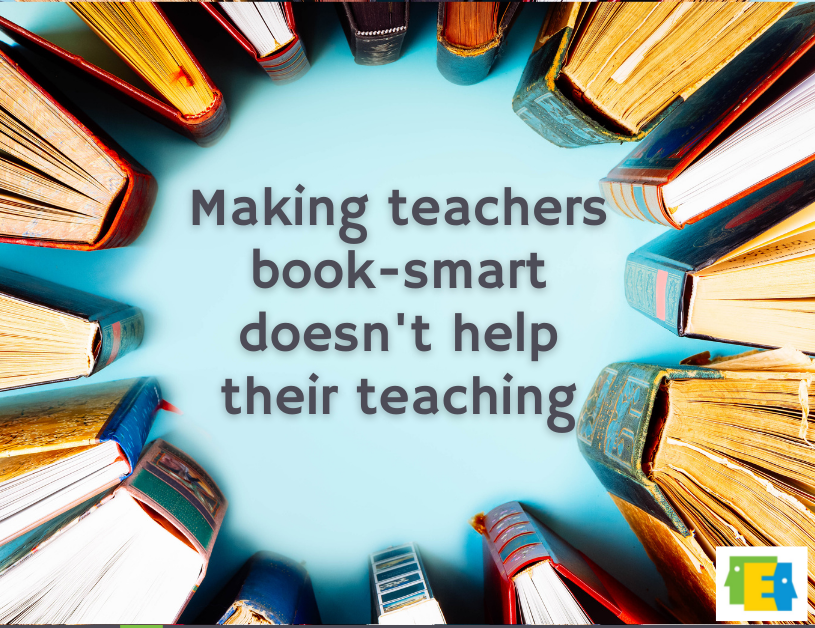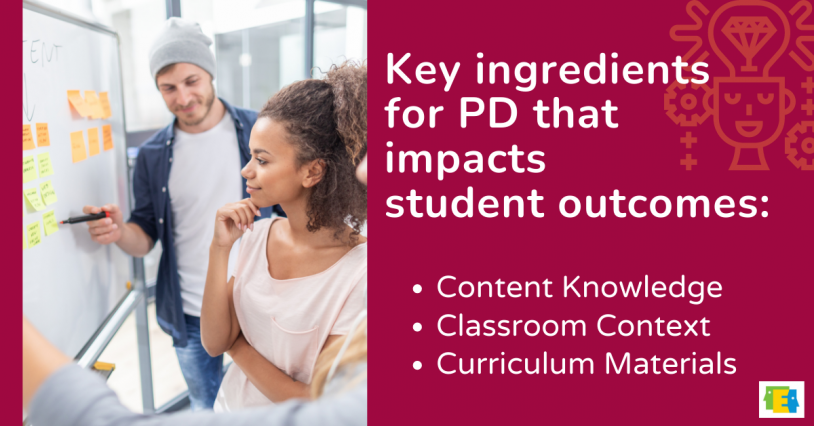Will Increasing Teacher Content Knowledge Actually Increase Student Achievement?
Building more content knowledge is often the go-to for teacher professional development, especially during back-to-school season. Teachers are learners at heart, and learning new content is often enjoyable.
But that’s not the way to get better student outcomes, according to academic research.
Heather Hill, a researcher at the Harvard Graduate School of Education, says to skip the PD that’s focused solely on developing new content knowledge. Instead, plan professional learning that combines content with context and curriculum.
In this PLtogether Lounge Talk, Heather talked with Edthena founder and CEO Adam Geller about how enabling teachers to practice is a critical ingredient for them to transfer new skills to their classrooms.
Watch the interview above to learn more, or continue reading for highlights of the conversation.
PD for building content knowledge is tried but not true
Teachers, particularly those teaching K-8, often have content knowledge gaps. Whether it’s fractions or earthquake P-waves, educators may not be prepared to teach certain objectives, especially in mathematics or science areas. 
According to Heather Hill’s research, the old—incorrect—assumption was that the solution would logically be to “increase that content knowledge in order to improve instruction and then improve student outcomes”
Perhaps some educators remember sitting in PD sessions where a math expert explained the base 10 system.
However, Heather Hill noted, “[this was] usually absent the context of classrooms, usually absent the context of … what kids were doing with math or what the curriculum materials looked like.”
This type of professional learning isn’t enough, she says.
If you’re working to build new content knowledge, add another ingredient into the mix
As Heather Hill and her colleagues looked at the data of these traditional professional development programs centered on content knowledge, they found that they did indeed affect student outcomes. So they looked closer to see what the actual features of effective teacher PD were.
Was it deep-diving into content alone or, as some programs implemented, working with curriculum materials?
The findings were surprising. Professional development programs focused only on improving teachers’ content knowledge had nearly zero impact on student achievement.
Rather, “programs that combined professional development with curriculum materials were more effective than programs that only did those things separately.”
Teachers who were given the opportunity to learn content knowledge in conjunction with looking at curriculum materials, “learning how to use them … rehearsing them with colleagues … working through the problems themselves,” had a 4-6% stronger effect on student outcomes.
Becoming well-versed with curricula was the key.
The reason is simple: Heather Hill explained, “If you practice doing something, if you study how to do something, you’re gonna get better at it.”
The conclusive evidence pointed to the revelation that “the pathway doesn’t seem to be through content knowledge, the pathway instead seems to be through improving teachers’ practice.”
Already started planning teacher professional development for the new school year?
Perhaps school leaders have already begun planning for sessions dedicated to the intricacies of equations or rock formations. Don’t throw it all out… add to it!
Becoming stronger with content knowledge is valuable for teachers, but only when in the concrete context of the actual lessons and units they will be teaching. Without the latter, teachers may have the understanding to teach that tricky algebra, but not a way to implement that knowledge.
Heather stated, “Curriculum materials always give you a chance to sort of bring those ideas back to your class and give them a try and hopefully implement them with high quality.”
This year, how will you plan more effective teacher professional development?
Find our other interviews with Heather Hill at PLtogether and on our blog.

